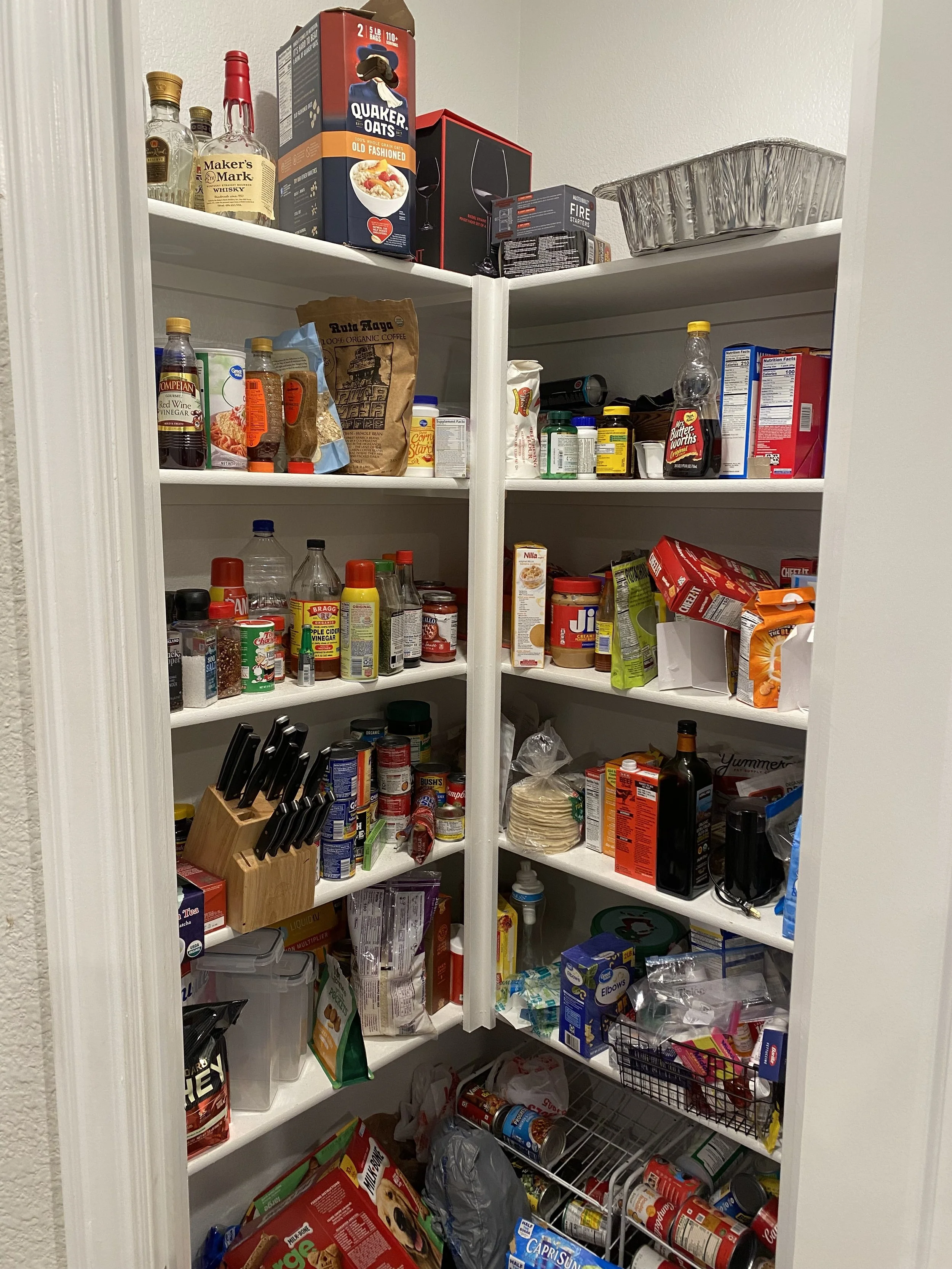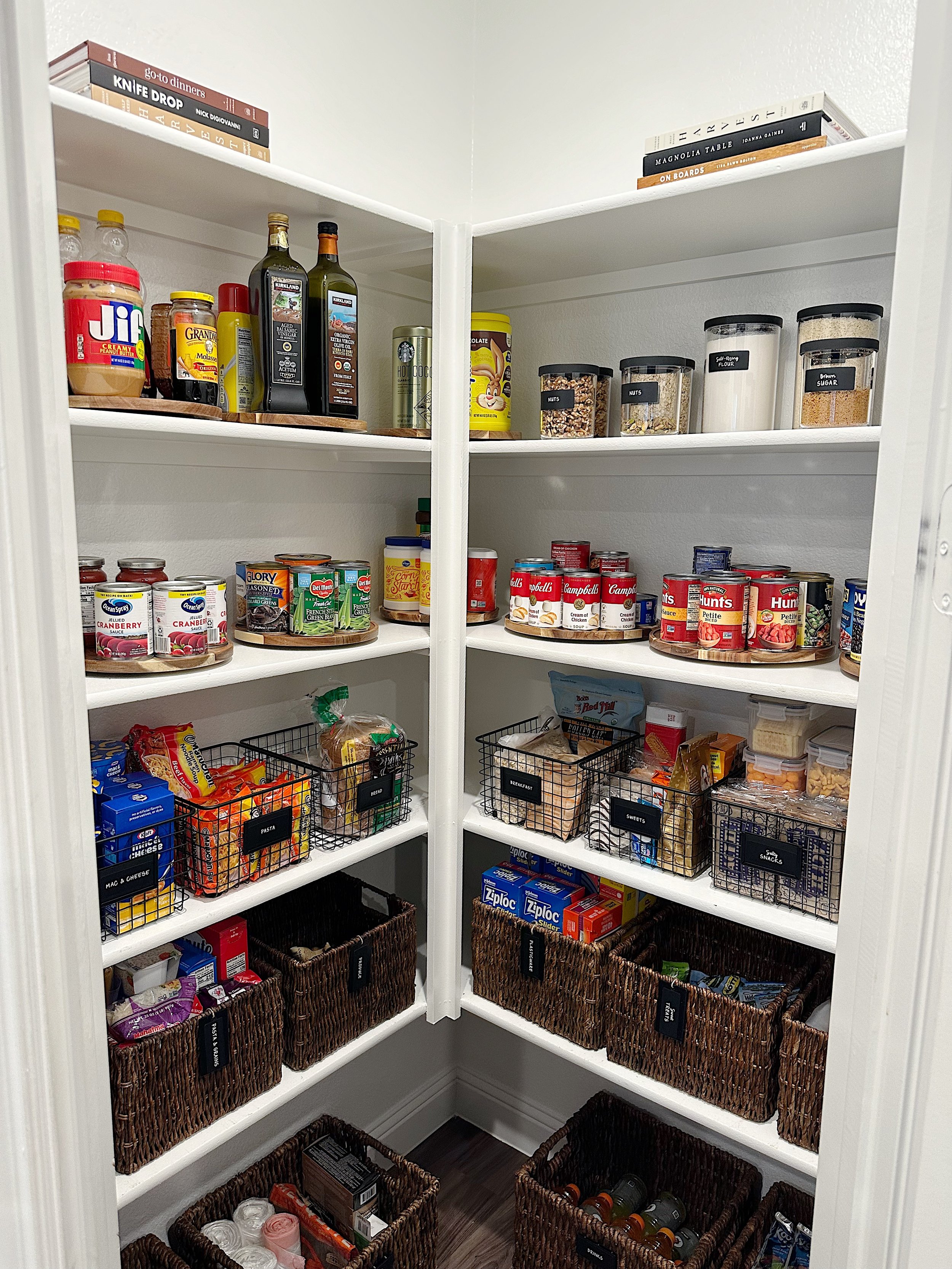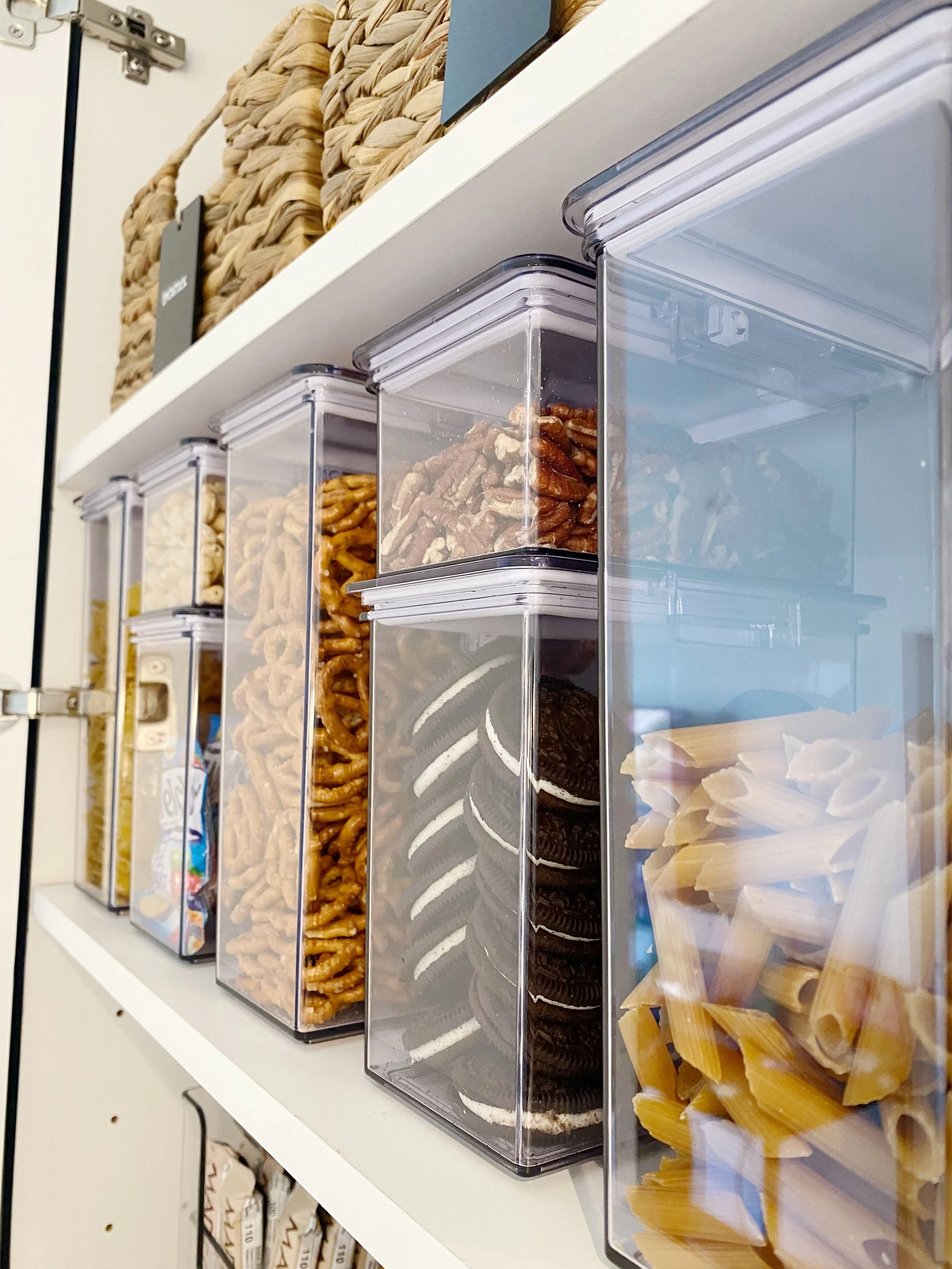Decanting 101: The Secret to a Sleek and Functional Kitchen & Pantry
When it comes to home organization, one word you'll hear often is decanting. It's a small shift that can create a big visual and functional impact—and it’s one of the easiest ways to elevate the look and feel of your kitchen or pantry. Whether you’re new to decanting or considering a system refresh, this post will walk you through the basics, explain why it matters, and show you how to implement it for maximum impact.
What Is Decanting?
Decanting is the practice of transferring products—typically food or household staples—out of their original packaging and into clear, often uniform, storage containers. You’ve probably seen beautifully decanted pantries on Pinterest or Instagram, where dry goods like pasta, cereal, and baking ingredients are stored in matching canisters with minimal labels and a streamlined look. Beyond being aesthetically pleasing, decanting serves a very practical purpose, too.
Why Is Decanting Important?
Original packaging is often bulky, mismatched, and inefficient. It’s not designed with your space in mind—it’s designed for the store shelf. Decanting not only helps you cut visual clutter, but it also:
Maximizes space: Uniform containers stack neatly and take up less room than irregular packaging.
Reduces waste: You can easily see how much you have left, helping you avoid overbuying or forgetting what you already own.
Preserves freshness: Airtight containers keep food fresher longer than flimsy plastic bags or boxes.
Elevates aesthetics: Let’s face it—clear containers with minimal labels simply look better.
The Benefits of Decanting in the Kitchen & Pantry
1. Streamlined Visuals
Opening your pantry to a row of clear, labeled containers creates a sense of calm and order. This kind of visual uniformity is a core principle in luxury organizing—it not only looks curated but also makes it easier to find what you need.
2. Function Meets Style
Decanting isn't just about looks—it can help create efficient systems. Want to set up a baking zone? Group flour, sugar, baking soda, and chocolate chips in labeled jars and place them together for grab-and-go convenience. Cooking rice or pasta often? Store grains by type and keep scoops inside for easy measuring.
3. Easy Maintenance
Once your decanting system is in place, maintaining it is simple. When you return from the store, refill containers and recycle or toss the original packaging right away—no more rummaging through half-empty bags. It keeps your system clean and running smoothly.
What Should You Decant?
Start with the items you use regularly and replenish often. Here are some great candidates for decanting:
Dry goods: Rice, pasta, lentils, oats, beans
Baking ingredients: Flour, sugar, baking powder, cocoa, chocolate chips
Snacks: Crackers, granola, trail mix, nuts
Breakfast items: Cereal, pancake mix, coffee grounds
Spices: Especially if you want uniform spice jars with labels on top for a drawer system
Tips for Starting Your Decanting System
Choose Your Containers Wisely: Look for airtight, food-safe containers. Clear acrylic or glass options work well and allow you to see the contents easily.
Label Everything: Use minimal, stylish labels—clear with black or white text—for a clean, polished look.
Group by Use: Store items by category (baking, breakfast, snacks, grains) to simplify your cooking process.
Keep a Backstock Zone: Not everything has to be decanted. Use bins or baskets for overflow or bulk items so you can refill as needed.
Final Thoughts
Decanting is about more than making your pantry Instagram-worthy—it’s about creating a system that supports your lifestyle, saves time, and brings a sense of calm to your everyday routine. It’s one of the simplest ways to create a luxurious, curated feel in your kitchen, and once you start, you’ll wonder how you ever lived without it.
Ready to get organized?
We offer customized organizing services tailored to your home and lifestyle. Contact us to schedule a consultation and take the first step toward your dream kitchen & pantry.







